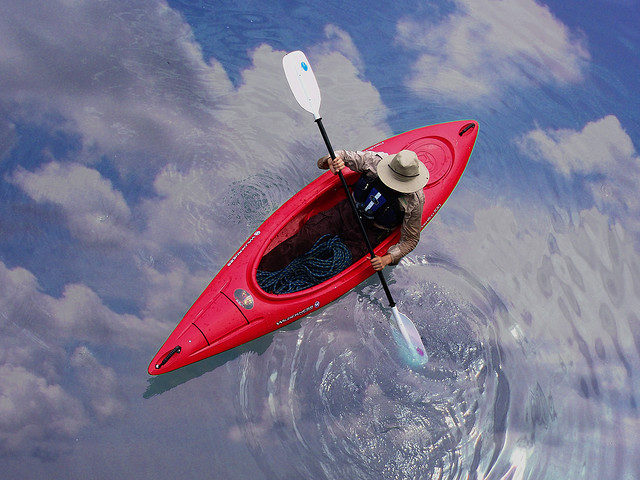
You’ve seen us out there, gliding through the water in what look long, thin, hollowed out bananas, weaving between river rocks on white water rapids, or chasing down steroid jacked baseballs floating in the San Francisco Bay and you’ve wanted to give kayaking a try, but you haven’t.
Maybe you didn’t know where to start. Maybe you were a little hesitant; kayaks don’t exactly seem to steer like bass boats, or even canoes. Don’t hesitate. With just a little info and a little cash you can be out gliding through the water in no time. And, if you didn’t know where to start, don’t worry about that anymore. You’re already on your way.
Before you get out on the water you’ll need to decide what kind of kayak will suit your needs the best. There are tons of different kayaks out there: children’s kayaks, pedal kayaks, competition kayaks, not to mention inflatable, folding and fishing kayaks, but you don’t need to worry too much about that. You should stick to the basics.
There are three main types of kayak: one seaters, tandem kayaks, and the ocean liner of kayaks, the three seated tri-yak. Each main type of kayak comes in two varieties: recreational and touring. Recreational kayaks are wider, lighter, have larger seats, and usually a little shorter than their touring cousins. For these reasons, recreational kayaks are better to learn on.
All kayaks are great fun. If you can get out on the water with an experienced kayaker, either in a tandem yak, or side by side in standard single seat kayaks, then you’ll have a much easier time making your choice, not to mention learning the basics.
Absent an experienced teacher, I recommend you buy a single seat, recreational kayak, don a life jacket, and find some relatively still water to practice on. The kayak will set you back anywhere from $350 to $900, if this too much of an initial investment for you, there are usually rental business in most areas with large bodies of water (and who would kayak on a pond, anyway) and many of these businesses offer lessons at reasonable rates.
Once you get your kayak picked out you’ll need to pick your paddle. Paddles are almost as varied as kayaks. They can be wood, plastic, aluminum or carbon. They come cheap, short, wide, long, adjustable and expensive. They also come in feathered (angled blades) and unfeathered (straight blades). Like choosing the right kayak, all these options can be really intimidating. My recommendation is to pick up an adjustable length, feathered paddle. The feathered paddle can get take a little getting used to, but, in the end, they glide through the water with a lot less effort. The adjustable length choice is a no-brainer. You’ve never been kayaking. You don’t know how long you’d like your paddle to be.
Once you’ve got your yak, your paddle, and a personal flotation device (life jacket or the like). You are ready to get out on the water and learn to kayak. However, there is a lot of optional gear you might what to consider.
Spray skirts: These help keep water out of the kayak.
Helmets: If you’re out on white water don’t get in the kayak without one.
Float bags: These come in a wide variety of shapes, sizes, and prices. But they can be a big help for beginning kayakers. Float bags are large, inflatable, bags that you can pack into the empty space on your kayak. They help make sure that it doesn’t sink or fill up with water and you definitely don’t want to try and haul a kayak weighted with water. A kayak full of water can weigh more than 400 pounds!
Dry bags: there are water proof sacks and cases that keep anything you want to bring with you kayaking safe from water.
You also might want to consider dry suits, wet suits, thin rubber shoes, water proof gloves, or other clothing items that can make your kayaking experience more enjoyable.
Photo:David Olivia
 Your Privacy Choices
Your Privacy Choices
 The
The